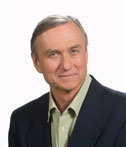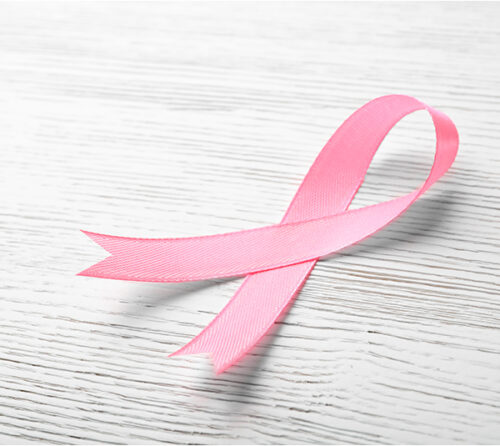Favorite 5 Articles from the September 2009 Newsletter

My Favorite Five from Recent Medical Journals
1. Profound Statements from the Former Editor of the Journal of the American Medical Association
Seven Ways to Reduce Unnecessary Medical Costs — Right Now!* by George Lundberg, MD.
Paraphrases of his seven points:
1) Substitute intensive medical care for bypass surgery.
2) Substitute intensive medical care for angioplasty.
3) Stop PSA testing for prostate cancer. Stop surgery for prostate cancer.
4) Stop mammograms for women under 50 and sharply curtail use of all mammograms.
5) Reduce use of expensive tests (CT and MRI).
6) Stop administering chemotherapeutic false hope for metastatic cancer.
7) Stop prolonging dying with false hopes, bravado, and intensive therapy.
According to Dr. Lundberg billions of dollars would be saved, and changing current practices would also reduce immeasurable human suffering.
George Lundberg, MD
1982 to 1999 – Editor in Chief of JAMA
Past President of the American Society of Clinical Pathologists
2002 to 2009: Editor in Chief of both Medscape General Medicine and CBS HealthWatch.com.
Academic appointments (professor): Northwestern and Harvard
Consulting Professor, Health Research Policy and Pathology, Stanford Medical School, Los Gatos, California
A few powerful quotes from this article:
“I believe that there are still many ethical and professional American physicians and many intelligent American patients who are capable of, in an alliance of patients and physicians, doing ‘the right things.’ Their combined clout is being underestimated in the current debate on healthcare reform.”
“The lure of economic incentives to provide care that is unnecessary, unproven, or even known to be ineffective encourages many physicians to make the lucrative choice. Hospitals and especially academic medical centers are also motivated to profit from many expensive procedures.”
“Why might many physicians, their patients, and their institutions suddenly now change these established behaviors? Patriotism, recognition of new science, stewardship, and the economic survival of the America we love. No legislation is necessary to effect these huge savings.”
“Academic medical centers should take the lead, rather than continuing to teach new doctors to ‘take the money and run.’”
Comment: George Lundberg, MD has just been added to my list of heroes and mentors. He is one more professional person with the courage to stand up and tell the truth. His voice is loud and cannot be ignored. If he can be heard then he can help stop the rivers of money that flow into the bank accounts of doctors, hospitals, device manufacturers, and insurance companies at the expense of patients.
You can have the great fortune of hearing him speak at our next Advanced Study Weekend, February 19 to 21, 2010. (Two other truth-tellers, Neal Barnard, MD and Dean Ornish, MD, will also be speaking that weekend.)
I would add these seven ways to reduce costs:
1) Require all doctors and dietitians to teach a starch-based diet.
2) Earnestly promote clean habits and exercise.
3) Make baby formula by prescription only.
4) Outlaw the sale of all oral diabetic medications.
5) Treat elevated blood pressure only after it is sustained for months at 160/100 mmHg or greater. Use a simple diuretic, chlorthalidone, when blood pressure needs to be lowered (to no less than 140/90 mmHg with medication).
6) Limit use of statins to people at high risk of heart disease—not simply to treat cholesterol numbers.
7) Promote conservative treatments for major organ cancers (lumpectomy, watchful waiting, no routine surgery, no routine radiation, etc.)
* This article has been removed from Medscape since the original publication on August 24, 2009. The author does not know the reason for its removal. You can still read the article, ‘How to Rein in Medical Costs, RIGHT NOW,’ in its entirety at the Lundberg Institute and at this blog.
2. No Treatment” IS Better for Prostate Cancer
Outcomes of localized prostate cancer following conservative management by Grace Lu-Yao published in the September 9, 2009 issue of the Journal of the American Medical Association concluded, ‘Considering favorable 10-year outcomes following conservative management, men with a life expectancy of less than 10 years may wish to consider an active surveillance or watchful waiting protocol as an alternative to immediate attempted curative therapy (radiation and/or radical surgery).’ The study followed 14,516 men diagnosed between 1992 and 2002 and found a 10-year overall survival of 94% for men with localized prostate cancer managed conservatively. Most importantly, these results are better than the 90% survival rate in a similar population of men who were treated with radical prostatectomy in a Scandinavian study. Urologists commonly use this Scandinavian study to recommend radical surgery to men. However, this study involved less than 700 men divided into two treatment groups and had an absolute survival advantage for surgery over ‘watchful waiting’ at 10 years of only 5.3%.
Comment: Once diagnosed with prostate cancer you are given three choices of therapy for the disease localized to the prostate: Radical surgery, radiation, or to do nothing. ‘Doing nothing’ is also called ‘watchful waiting.’ Doctors like to refer to this as ‘active surveillance.’ Since surgery and radiation have not been shown to save lives, active surveillance means ‘doing nothing’ until the cancer returns or the PSA rises higher, and then doing treatments that would have not saved lives in the first place.
Approximately 10% of middle-aged men are found to have a positive PSA test. Approximately a quarter of these men have prostate cancer on biopsy. The lifetime risk of being diagnosed with prostate cancer is about 17%, while the risk of dying of this disease is only about 3%. Conservative management (no surgery or radiation) is used in only about 10% of patients—the rest get radiation and surgery, with common debilitating effects of impotence and incontinence.
Until proven otherwise, conservative therapy is the right choice, even for men with disease that appears to be aggressive. A recent study of 50 men showed very good outcomes for men with a prostate cancer given a Gleason score of 7. None of the men died of prostate cancer over the 6 years of study. There is no reliable evidence to support recommendations for radical treatments, surgery or radiation, for men of any age or with any Gleason score. (Gleason score is an imprecise grading system used by pathologists to help determine prognosis.) Unfortunately most doctors are afraid to practice evidence-based medicine and to do the right thing. If a metastatic prostate cancer is discovered after opting for watchful waiting, then there is danger for the doctor—especially in the litigious environment of the United States—of a malpractice claim of medical negligence. Because of these fear-based medical practices, millions of people are harmed unnecessarily.
1) Lu-Yao GL, Albertsen PC, Moore DF, Shih W, Lin Y, DiPaola RS, Barry MJ, Zietman A, O’Leary M, Walker-Corkery E, Yao SL. Outcomes of localized prostate cancer following conservative management. JAMA. 2009 Sep 16;302(11):1202-9.
2) Bill-Axelson A, Holmberg L, Ruutu M, Håggman M, Andersson SO, Bratell S, Spångberg A, Busch C, Nordling S, Garmo H, Palmgren J, Adami HO, Norlén BJ, Johansson JE; Scandinavian Prostate Cancer Group Study No. 4. Radical prostatectomy versus watchful waiting in early prostate cancer. N Engl J Med. 2005 May 12;352(19):1977-84.
3) van den Bergh RC, Roemeling S, Roobol MJ, Aus G, Hugosson J, Rannikko AS, Tammela TL, Bangma CH, Schröder FH. Gleason score 7 screen-detected prostate cancers initially managed expectantly: outcomes in 50 men. BJU Int. 2009 Jun;103(11):1472-7.
4) Wilt TJ, MacDonald R, Rutks I, Shamliyan TA, Taylor BC, Kane RL. Systematic review: comparative effectiveness and harms of treatments for clinically localized prostate cancer. Ann Intern Med. 2008 Mar 18;148(6):435-48.
3. Vegetarians Make Plenty of Essential Fats (DHA)
DHA status of vegetarians by Thomas Sanders in the August-September 2009 issue of the journal Prostaglandins Leukotrienes and Essential Fatty Acids concluded, ‘the relatively lower intake of linoleic acid and the presence of preformed DHA (fish) in the diet of omnivores explain the relatively higher proportion of DHA in blood and tissue lipids compared with vegetarians. In the absence of convincing evidence for the deleterious effects resulting from the lack of DHA from the diet of vegetarians, it must be concluded that needs for omega-3 fatty acids can be met by dietary ALA (alpha linolenic acid).’ ALA is made by plants.
Comment: Your well-meaning friends and family may insist you eat fish in order to get enough of the essential fat DHA for the sake of your brain. The two fatty acids (fats) that are essential for human health are the omega-3 alpha, linolenic acid (18:3n-3; ALA) and the omega-6, linoleic acid (18:2n-6; LA). Only plants can synthesize these two fats. No animal or fish can make these fats, but they can be stored in their bodies. These essential fats are converted in animals, including fish, to longer chain derivatives, such as DHA and EPA.
DHA, which stands for docosahexaenoic acid, is a type of fat found abundant in the membranes of the retinas of the eyes and the brain. DHA is naturally found in human breast milk, and preformed dietary sources for adults include fatty fish. The human body has no difficulty converting the plant-derived omega-3 fat, ALA, into DHA or other omega-3 fatty acids, in the liver, thus supplying our needs even during gestation and infancy.
1) Sanders TA. DHA status of vegetarians. Prostaglandins Leukot Essent Fatty Acids. 2009 Aug-Sep;81(2-3):137-41.
2) Langdon JH. Has an aquatic diet been necessary for hominin brain evolution and functional development? Br J Nutr. 2006 Jul;96(1):7-17.
4. Cholesterol-lowering Statins Weaken Muscles and Cause Falls
Statin Therapy, muscle function and falls risk in community-dwelling older adults by D. Scott, published in QJM, monthly journal of the Association of Physicians, found ‘Statin use may exacerbate muscle performance declines and falls risk associated with aging without a concomitant decrease in muscle mass, and this effect may be reversible with cessation.’ A common side-effect of statin therapy is skeletal muscle damage (myopathy), which sometimes includes muscle pain (myalgia) and weakness. Enzymes released from the muscles (creatine kinase) may or may not rise in the blood in association with this damage.
In this study, a total of 774 (48% female) participants were studied over 2.6 years. The average age was 62.0 (range 51–80 years). No differences in effects were found among different kinds of statins. Stopping statin use was associated with improvement.
Comment: This paper describes subtler, easily overlooked, harms from cholesterol-lowering statins—muscle weakness and falls. We commonly hear of the rare but severe form of muscle damage, rhabdomyolysis, which can occasionally result in death. About 1% to 5% of people on these medications experience muscle inflammation and pain (myositis). A recent study, with electron microscopy and biochemical approaches, examined the muscle tissues of patients on statins. They found muscle cell damage in over 70% of people on statins, even when they had no complaints of pain.
The safest and least expensive way to lower cholesterol levels is to eat a low-fat, no-cholesterol diet, like the McDougall Diet. Typically people experience a 20 to 60 mg/dL reduction in total cholesterol in seven days on blood tests—along with many other benefits from their change in diet. I do not prescribe statin drugs in otherwise healthy people because benefits, in terms of reduced heart attacks and death, are not apparent. I do prescribe statins in patients with a high risk of a future heart attack or stroke (for example, a person with a history of a previous heart attack, angioplasty, or bypass surgery). For these few people in need of medication my goal is to reduce their total cholesterol below 150 mg/dL with the foundation of their care always being the McDougall Diet, strictly followed.
1) Scott D, Blizzard L, Fell J, Jones G. Statin therapy, muscle function and falls risk in community-dwelling older adults. QJM. 2009 Sep;102(9):625-33.
2) Draeger A, Monastyrskaya K, Mohaupt M, Hoppeler H, Savolainen H, Allemann C, Babiychuk EB. Statin therapy induces ultrastructural damage in skeletal muscle in patients without myalgia. J Pathol. 2006 Sep;210(1):94-102.
5. Osteoporosis Drugs May Cause Esophageal Cancer
Reports of esophageal cancer with oral bisphosphonate use by Diane K. Wysowski, Ph.D. from the Food and Drug Administration in the January 2009 issue of the New England Journal of Medicine found that, ‘Between the time of the initial marketing of alendronate (Fosamax) in October 1995 through mid-May 2008, the Food and Drug Administration (FDA) received reports of 23 patients in the United States receiving a diagnosis of esophageal cancer, with alendronate (Fosamax, Merck) as the suspect drug (in 21 patients) or the concomitant drug (in 2 patients).’ The median time from alendronate use to diagnosis was 2.1 years. Thirty-one patients from Europe and Japan were reported as having received a diagnosis of esophageal cancer after using alendronate (the suspect drug in 21 of the patients).’ Several critics with ties to the drug industry responded to this potential risk in the April 2009 issue of the Journal.
The first warning in the Physician’s Desk Reference is: FOSAMAX, like other bisphosphonates, may cause local irritation of the upper gastrointestinal mucosa. Esophageal adverse experiences, such as esophagitis, esophageal ulcers and esophageal erosions, occasionally with bleeding and rarely followed by esophageal stricture or perforation, have been reported in patients receiving treatment with FOSAMAX. Patients are instructed to sit up or stand up for 30 minutes after taking this medication in order to help prevent esophageal damage.
Bisphosphonates, which include Fosamax, Actonel, Boniva, and Zometa, are dangerous drugs with few actual benefits for the prevention of osteoporosis-related fractures. They have been shown to cause delay in fracture healing (non-union of fractures), death of bone (jaw necrosis), severe bone, joint, and muscle pain in women, and damage to the esophagus. There has also been concern that they may cause heart damage (atrial fibrillation).
Eating the rich Western diet, especially the consumption of animal proteins and associated dietary acids, causes osteoporosis. These acids must be neutralized after ingestion. The bones are the primary buffering system of the body. They dissolve to release alkaline materials. At the same time, changes take place in the kidneys from animal proteins and acids allowing the bone materials to pass out of the body into the urine where these precious materials are lost. There is every reason to believe that osteoporosis is not only preventable by following an alkaline-rich, starch-based diet, but also reversible. My patients have shown improvements in their bone mineral density (BMD) after changing to the McDougall Diet. Exercise is also helpful.
1) Wysowski DK. Reports of esophageal cancer with oral bisphosphonate use. N Engl J Med. 2009 Jan 1;360(1):89-90.
2) N Engl J Med. 2009 Apr 23;360(17):1789-90.
Recommended Articles

The Myth of Moderation: Do All Foods Really Fit?

A Healthy Vegan Diet Can Save Our Planet






